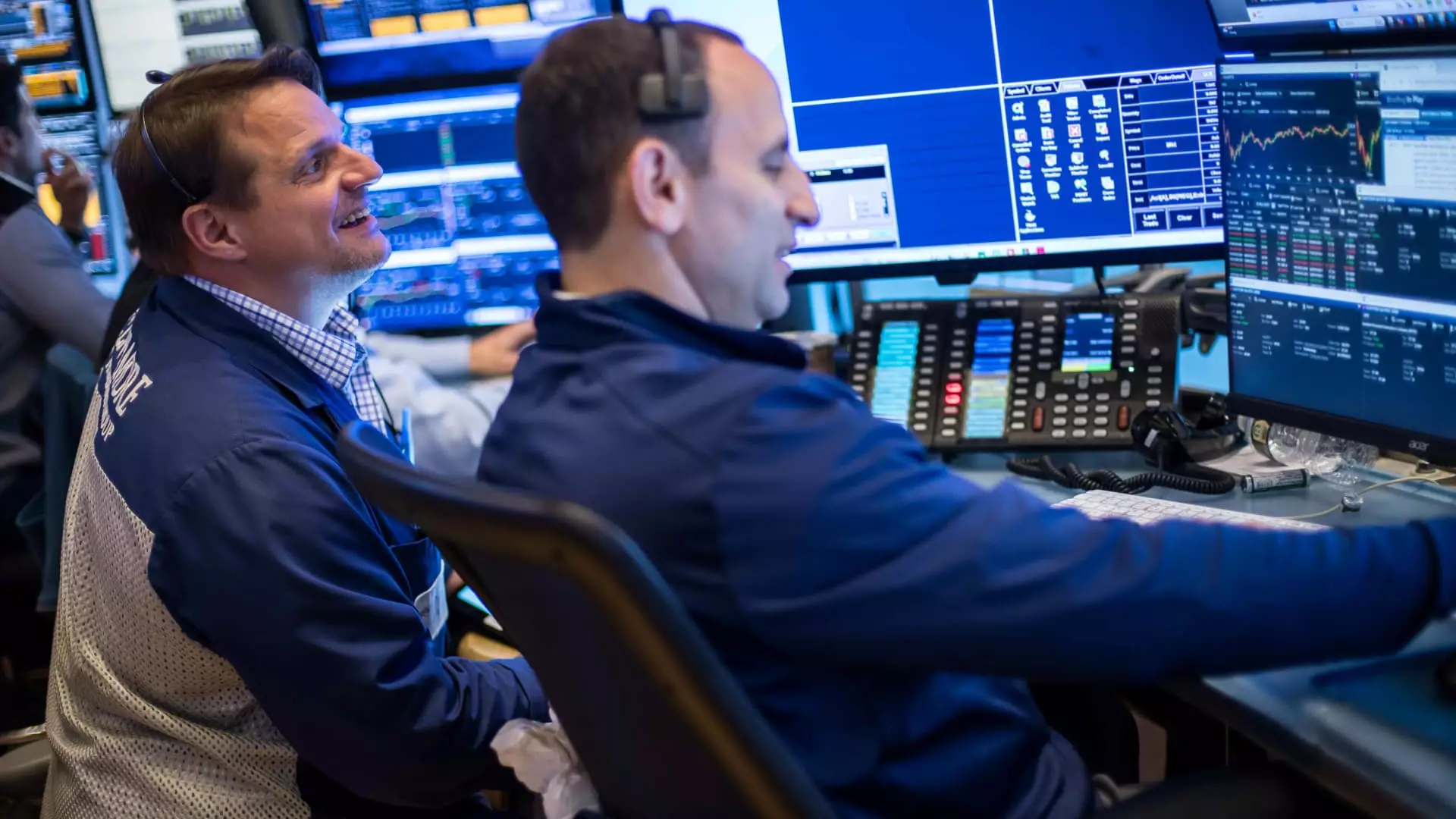In an era where uncertainty looms large over financial markets, the recent surge in stocks paints a striking picture of resilience in the U.S. economy. On Friday, a breath of relief swept through Wall Street as the newly released nonfarm payrolls data surpassed expectations, triggering a jubilant rally. The Dow Jones Industrial Average soared by 443.13 points or 1.05%, closing at an impressive 42,762.87. At its zenith, the blue-chip index had spiked over 600 points, a momentary disclosure of investor optimism.
Yet, one must remain cautious in the face of such buoyant statistics. Though the S&P 500 similarly climbed 1.03%, exceeding the notable 6,000 mark for the first time since late February, the broader context suggests that this rise is still underpinned by various structural issues that threaten to unravel this fragile optimism. The Nasdaq Composite also enjoyed gains, rallying 1.20% to end at 19,529.95, buoyed notably by a significant rebound from Tesla shares, which had experienced unsettling declines in the days preceding this report.
Labor Market Dynamics: A Double-Edged Sword
The Bureau of Labor Statistics reported that U.S. payrolls rose by 139,000 in May, marking a commendable increase that defied a more pessimistic forecast of 125,000. However, the gain is slightly less than the previous month’s downwardly revised figure of 147,000. In this intricate dance of figures, the unchanged unemployment rate at 4.2% brings some optimism, yet it necessitates a critical examination of what lies beneath these numbers.
Anthony Saglimbene, chief market strategist at Ameriprise, aptly noted that while the labor market appears robust, it also faces challenges. Indicators such as increased unemployment claims and disappointing private sector payroll growth—only 37,000 compared to an anticipated 110,000—highlight the unevenness within employment trends. The juxtaposition of these figures showcases a paradox: robust headlines may mask underlying vulnerabilities. It is crucial to ponder whether this bounce back is a genuine sign of economic health or merely a reflection of temporary market whims.
The Impact of Trade Policies and Tariffs
Amid this scenario of economic uncertainties, the specter of tariffs and global trade negotiations looms over corporate America. The looming question of their impact on inflation and subsequent economic growth adds layers of complexity to market dynamics. Recent data hint at a stagnant services sector, raising alarms about future growth as consumers and businesses alike brace for the fallout of escalating trade tensions.
Saglimbene warns that the true economic consequences of aggressive tariff policies could become more apparent in the weeks ahead. With the Federal Reserve set to convene on interest rate policy in mid-June, investors are left grappling with an unsettling landscape of potential inflationary pressures, feeding into their anxieties about profitability and growth sustainability. In this fertile ground for uncertainty, small fluctuations in data could have disproportionate effects, leaving investors in a precarious state of contention.
Hope on the Horizon: The Trade Talks Dilemma
President Trump’s announcement of upcoming trade discussions with China in London has provided a glimmer of hope to beleaguered markets, yet the lingering skepticism cannot be dismissed. While the stock market’s optimism surged immediately following the news, the broader economic realities suggest that these talks may not yield immediate solutions. Investors must adopt a measured approach, weighing promises of fruitful negotiations against the ever-present possibility of further discord.
The S&P 500, despite showcasing impressive weekly gains—up 1.5%—still closes more than 2% below February highs, indicating that markets remain on edge. As the Dow logs a 1.2% weekly gain and the Nasdaq enjoys a 2.2% increase, the contrasting sentiment illustrates a tenuous balance where every piece of news carries the potential to sway the markets dramatically.
In essence, while the recent stock market rally paints a rosy picture, core economic indicators tell a more nuanced tale—one filled with both alarming warnings and cautious optimism. Investors would do well to embrace a perspective steeped in critical thinking as they navigate these turbulent waters. Each piece of complacent data might spark joy, but behind it lies a delicate balance that could tip at any given moment.


Leave a Reply